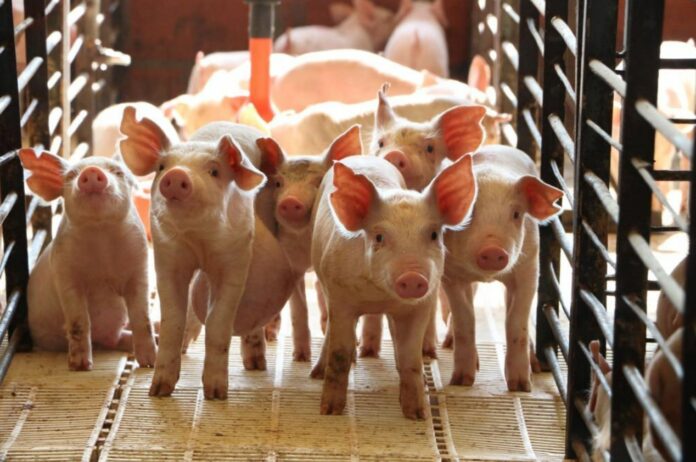A new animal study shows that when two pigs are fighting, a third pig can step in and either stop the aggressor from attacking as much or help the victim feel less anxious. The study, which looked at 104 domestic pigs, was published in the journal Animal Cognition. It shows how pigs form complex social groups and how they might handle disagreements.
In social animals, reuniting the aggressor and victim after an aggressive event (called “reconciliation”) or bringing in a third-party bystander to stop further aggression or anxiety are two ways to solve a conflict (known as triadic contacts). These ways of solving conflicts are important for keeping social animal groups in balance and making victims feel less anxious, but it’s not clear how this applies to domestic pigs.
Giada Cordoni, Ivan Norscia, and their colleagues from the University of Torino in Turin, Italy, observed 104 pigs at the ethical farm Parva Domus in Turin, Italy, after they had fought. The majority of pig generations could be distinguished by breed, size, and markings, but the authors also genetically analyzed 31 pigs from various generations to ascertain the level of relatedness among the entire group. From June through November 2018, they monitored and documented the pigs’ interactions, noting aggressive behaviors such head-butting, pushing, biting, and lifting the afflicted pig. Following each aggressive fight, the authors observed behavior for three minutes while making note of gender, kinship, and age.
The authors noted that both the attacker and victim displayed behaviors associated with reconciliation, including sitting close to one another, making physical contact, and resting their heads on the other. They came to the conclusion that both the offender and the victim were equally responsible for initiating reconciliation behaviors following the dispute. However, they discovered that the proportion of reconciliations was substantially higher in distantly related pigs than in those that were closely connected.
According to the authors, pigs may value various relationships depending on what they can contribute, including social support. Fighting between half or full siblings, who are believed to be closer relatives, may do less harm to social groupings since these relationships are viewed as being more stable. To make sure they still have access to food and social support within the group, it’s possible that pigs who are not closely related to one another are more inclined to engage in reconciliation behavior after fighting.
The authors observed different behaviours based on who the bystander pig approached and engaged with after the battle. If the bystander approached and interacted with the victim, the number of hostile behaviors did not affect, but the average hourly frequency of anxiety-related behaviors considerably decreased. Shaking, scratching, chewing with an empty mouth, and yawning were among anxiety-related behaviors. The number of aggressive behavior assaults against the victim, however, was drastically reduced if a nearby pig approached the attacker.
When either the offender or the victim was a close relative, a greater number of bystander pigs intervened in the confrontation. This, according to the authors, shows that pigs value certain relationships and might even encourage closely related family.
When the victim pig tried to approach and talk to a bystander after a fight, it didn’t change its behavior or make it less likely that it would be attacked again. This could be because 95.2% of the bystander pigs (42 cases) didn’t join in when a victim came up to them.
The study only included one group of adult domestic pigs, thus the authors warn that it might not accurately represent all pig populations. Future studies might look into whether these conflict-resolution techniques are used in other circumstances.
According to the authors, the fact that pigs participated in triadic interactions and reconciliation after a conflict implies they may have some socio-emotional regulation skills that could influence how they or others perceive group conflict.
Source: 10.1007/s10071-022-01688-4
Image Credit: Getty
